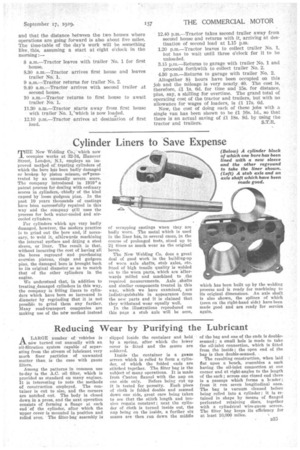Reducing Wear by Purifying the Lubricant
Page 69

If you've noticed an error in this article please click here to report it so we can fix it.
A LARGE number of vehicles is miw turned out annually with an oil-filtration system capable of separating from the stream of lubricant very much finer particles of unwanted matter than is the case with gauze filters.
Among the patterns in common use to-day is the A.C. oil filter, which is provided as standard on many engines. It is interesting to note the methods of construction employed. The container is cut to size, and the corners are notched out. The body is closed down in a press, and the next operation consists of forming a flange at each end of the cylinder, after which the upper cover is mounted in position and rolled over. The filter-bag assembly is slipped inside the container and held, by a spring, after which the lower cover is fitted and the seams are soldered.
Inside the container is a gaze screen which is rolled to form a cylinder, of which the folded ends are stitched together. The filter bag is the subject of many operations. It is made from Canton flannel with the nap on one side only. Before being cut up it is tested for porosity. Each piece of cloth is folded double and seamed down one side, great care being taken to see that the stitch length and tension remain constant; next the cylinder of cloth is turned inside out, the nap being on the inside, a further six seams are then run down the middle of the bag and one of the ends is doubleseamed ; a small hole is made to take the oil-inlet connection, which is fitted from the inside; the open end of the bag is then double-seamed.
The resulting construction, when laid flat upon a bench, resembles a sack having the oil-inlet connection at one corner and at right-angles to the length of the sack; across one closed end there is a passage which forms a header; from it rim seven longitudinal ones. The bag is vacuum cleaned before being rolled into a cylinder ; it is retained in shape by means of flanged perforated retaining discs, together with a cylindrical wire-gauze screen. The filter bag keeps its efficiency for at least 10,000 miles. k




















































































































